Cosmatesque Architecture and the Coronation.
It may have come to your attention that Queen Elizabeth II, the world’s second longest serving monarch (Louis XIV who acceded to the throne aged four and a bit ruled for over seventy-two years) died last week. Sixty-nine years ago she was crowned Queen in Westminster Abbey, over a year after her accession. In common with every coronation since Edward I in 1272, that ceremony took place on a floor made by Roman craftsmen.
The floor is known as the Cosmati pavement, using a term coined in 1860 when Camillo Boito published an article entitled “Cosmatesque Architecture”. Boito was the first to use the term to encompass a particular type of geometric decorative stonework found in Roman church decoration in the twelfth and thirteenth centuries.
While providing a useful label for this type of decoration, it is a little misleading: there was no single family called the Cosmati, rather it is a catch-all encompassing several families of Roman stonemasons. In the twelfth and early thirteenth centuries families and workshops worthy of mention include those of a Magister Paulus; of Pietro Mellini; of the Vassalletti; and of a man called Tebaldo Marmorario (Tebaldo the marble worker).
There are two notable Cosmas in the midst of these family lines from whence the term “Cosmatesque”: Tebaldo Marmorario’s son, Lorenzo di Tebaldo is documented until c.1190. Lorenzo’s son Jacopo is documented between 1195 and 1210, and Jacopo’s son is called Cosma. He leaves his name on inscriptions between 1210 and 1231.
There is also an important Magister Cosmatus active in the late 13th century, whose laconic signature appears at the exquisite Sancta Sanctorum at the Lateran.
Regardless of specific genealogical connections, the common thread in all Cosmati work is the reuse of the grandest materials of the Imperial city: columns of purple porphyry from the Eastern deserts of Egypt; green serpentine from the Peloponnese of mainland Greece; and Numidian yellow from the border of modern Tunisia and Algeria. Columns were sliced like salami into discs around which triangular chips were arranged in elaborate geometric and serpentine forms inlaid to create pavements, tombs, altars, pulpits, and bishops’ thrones.
Indeed Cosmati work was indicative of a sort of mini-Renaissance; a profound “rebirth” inspired by the study of the antique, as well as the art of Byzantium, the Eastern Roman Empire through which that most Roman of arts, mosaic, continued to thrive. Ultimately this spirit of rebirth was to prove a false dawn, thwarted by the shift of the seat of the papacy to Avignon in the early fourteenth century. Rome’s fragile equilibrium was once again to spiral into economic and political entropy.
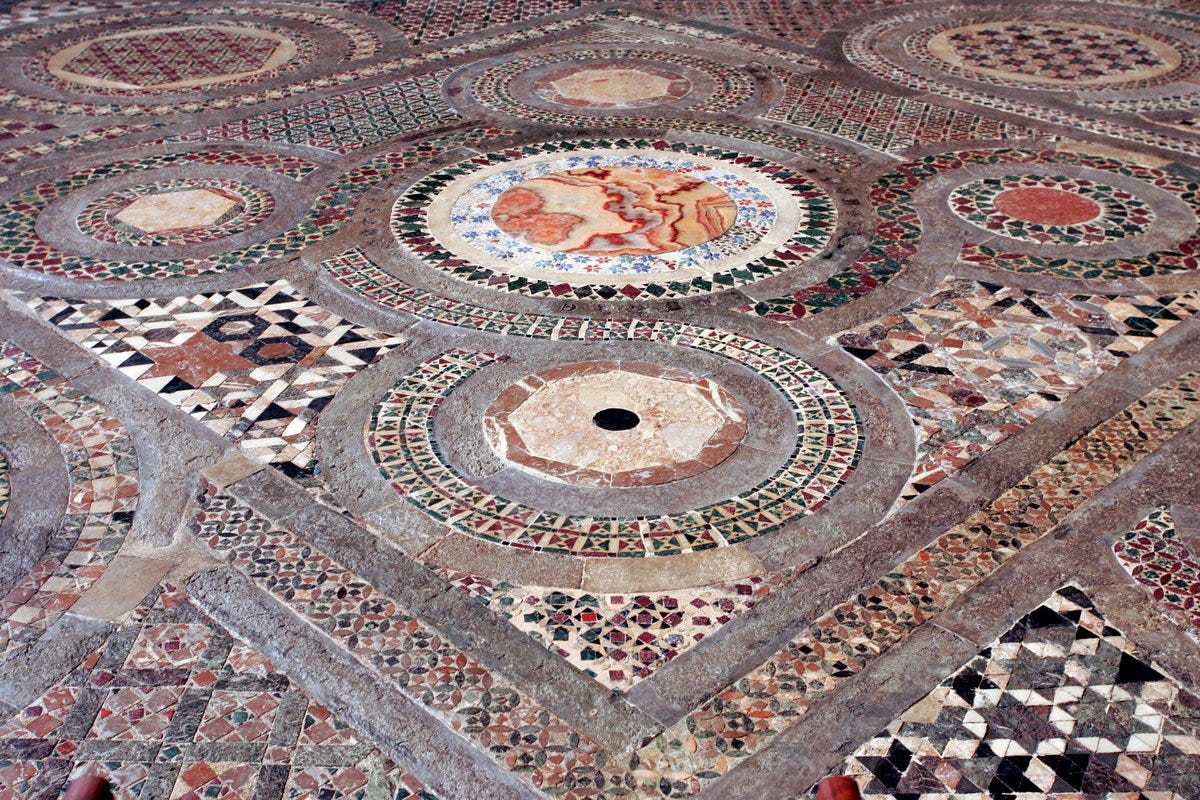
However, before the Avignonese papacy abandoned Rome to the iniquities of the fourteenth century, Cosmati work was to become ever more celebrated. Such was the fame of the Roman stonemasons that a certain Odericus was called to London by King Henry III to create the floor in front of the high altar at Westminster Abbey. It is signed, and dated 1268. Coloured stones, once pilfered from across the Empire, were taken by sea to London. To this geological map of long-lost Empire were added coloured glass and gilded tiles. Both the materials and the techniques, merging mosaic and opus sectile, are fundamentally Roman.
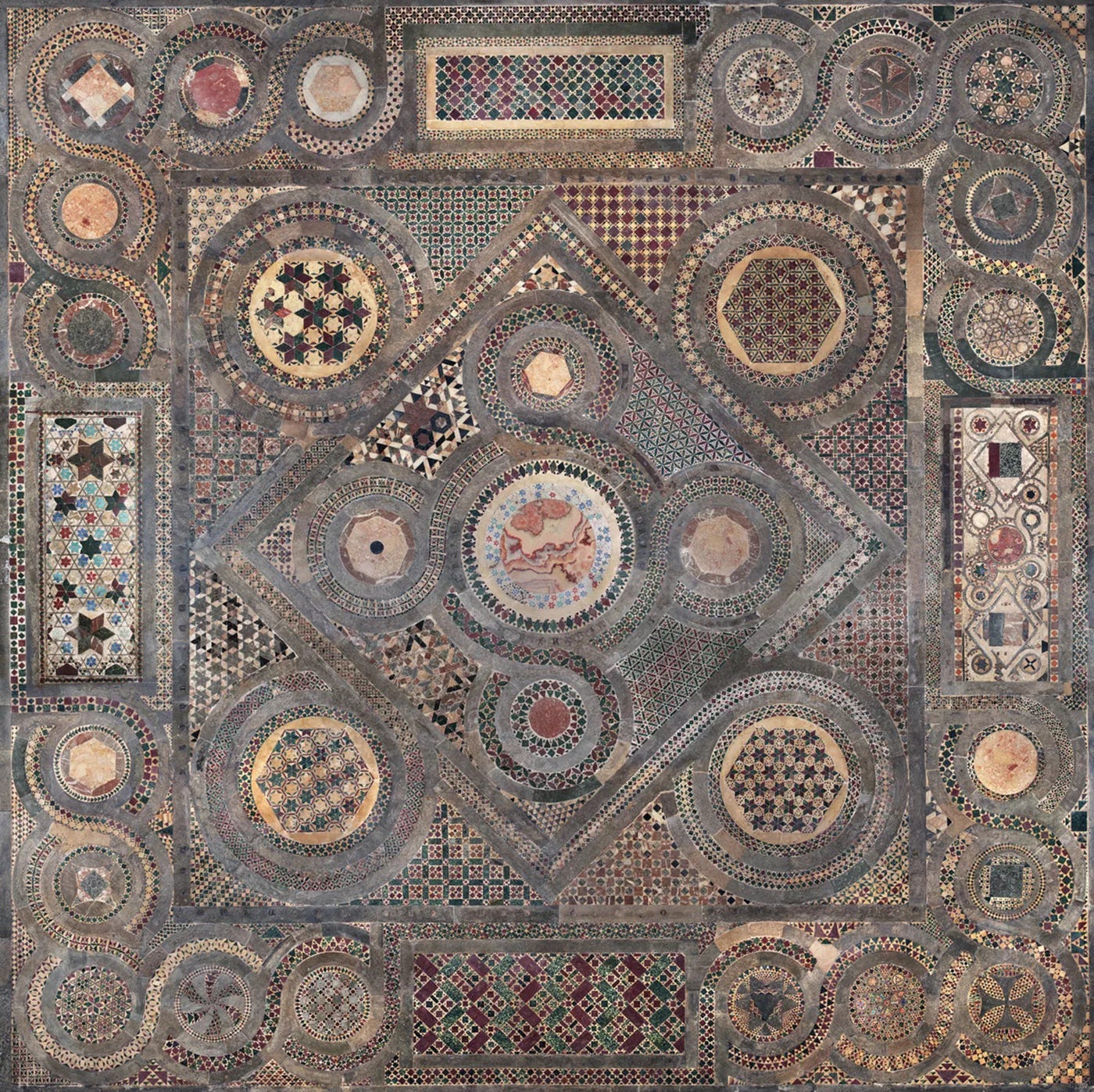
Porphyry and serpentine were shipped from Rome but, in an attempt to reduce costs at Westminster, white Luni marble was substituted with Purbeck limestone. The friable Dorset stone is considerably more fragile, and when the Queen was crowned in 1953 the pavement was hidden beneath a carpet. It was only after a restoration completed in 2010 that the floor was permanently uncovered. When the coronation of her son as King takes place in due course that too will take place upon the Cosmati pavement, now visible in all of its glory, and made from the repurposed fragments of the temples and palaces of imperial Rome. Rome may be an exercise in the conservation of matter, but it is not an entirely closed circuit. After all some of it ended up in London; one really is never very far from Rome.


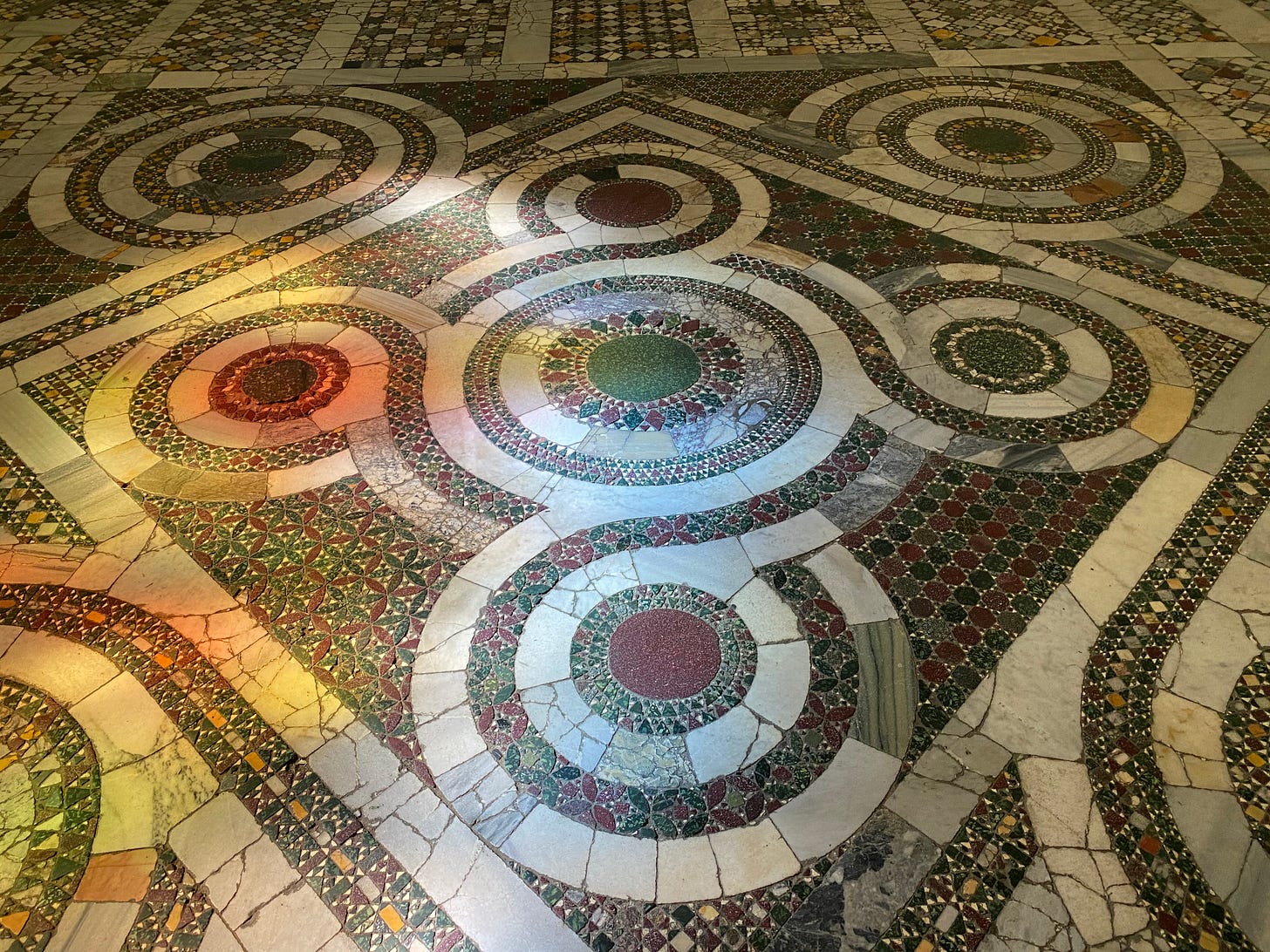
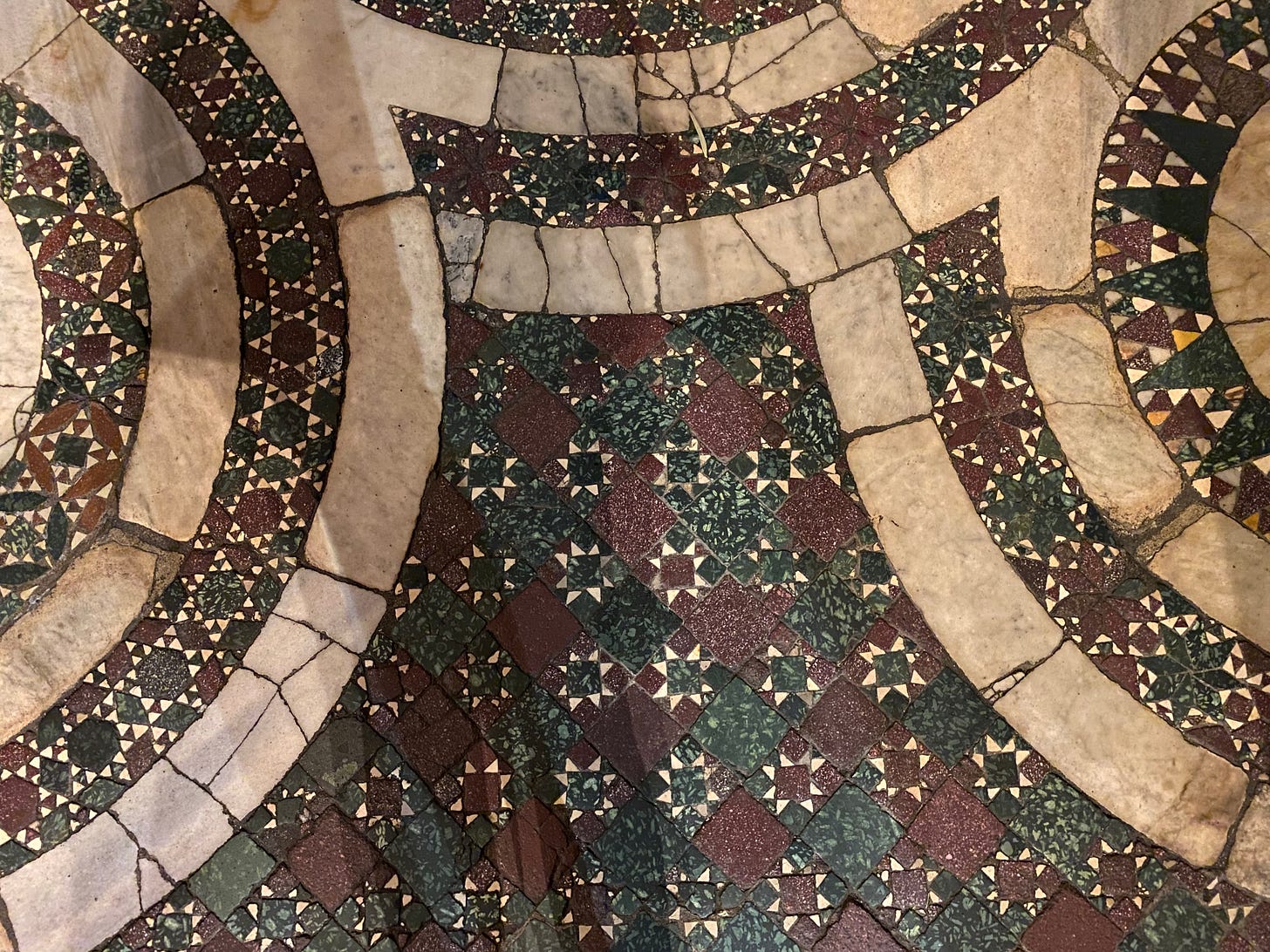
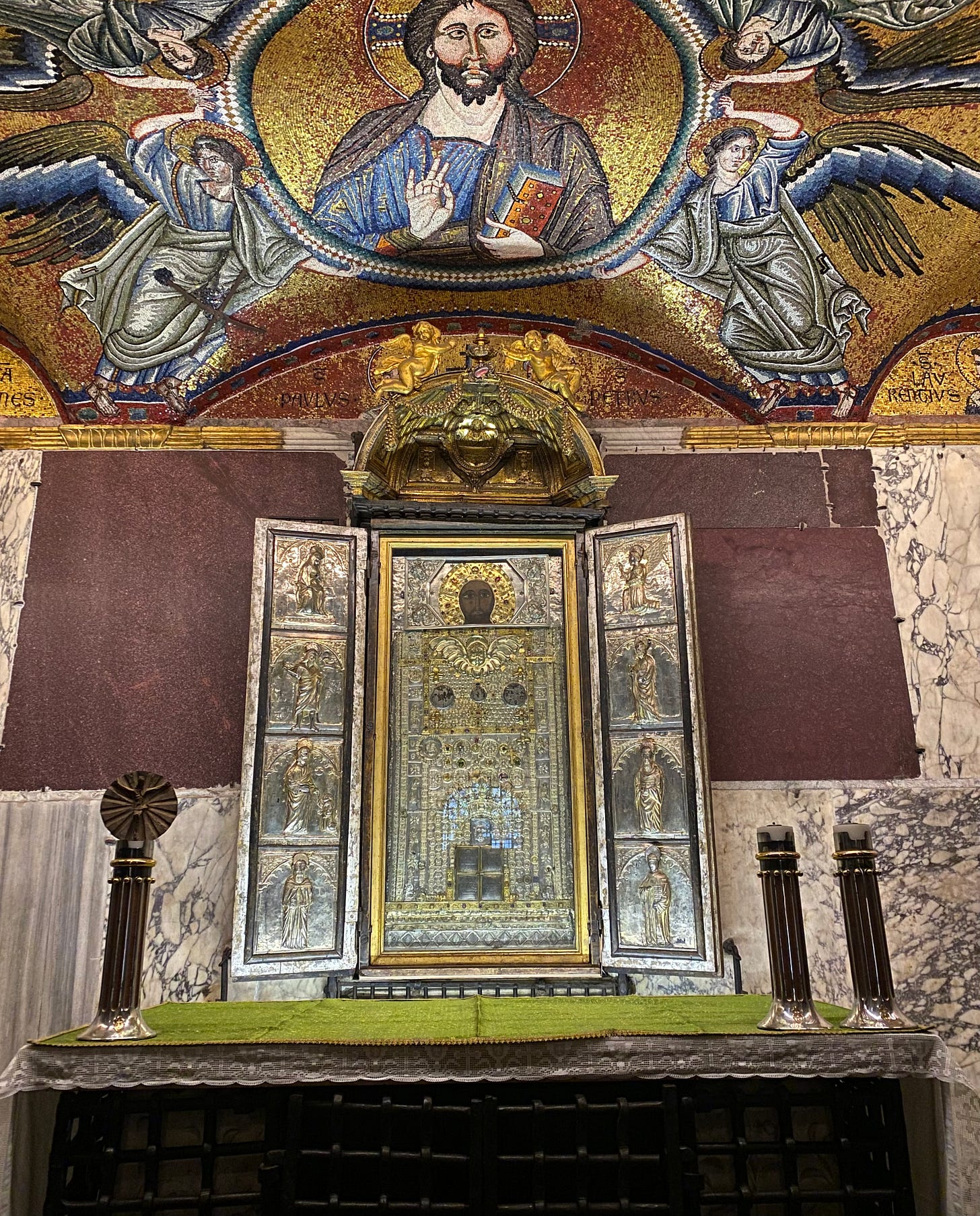
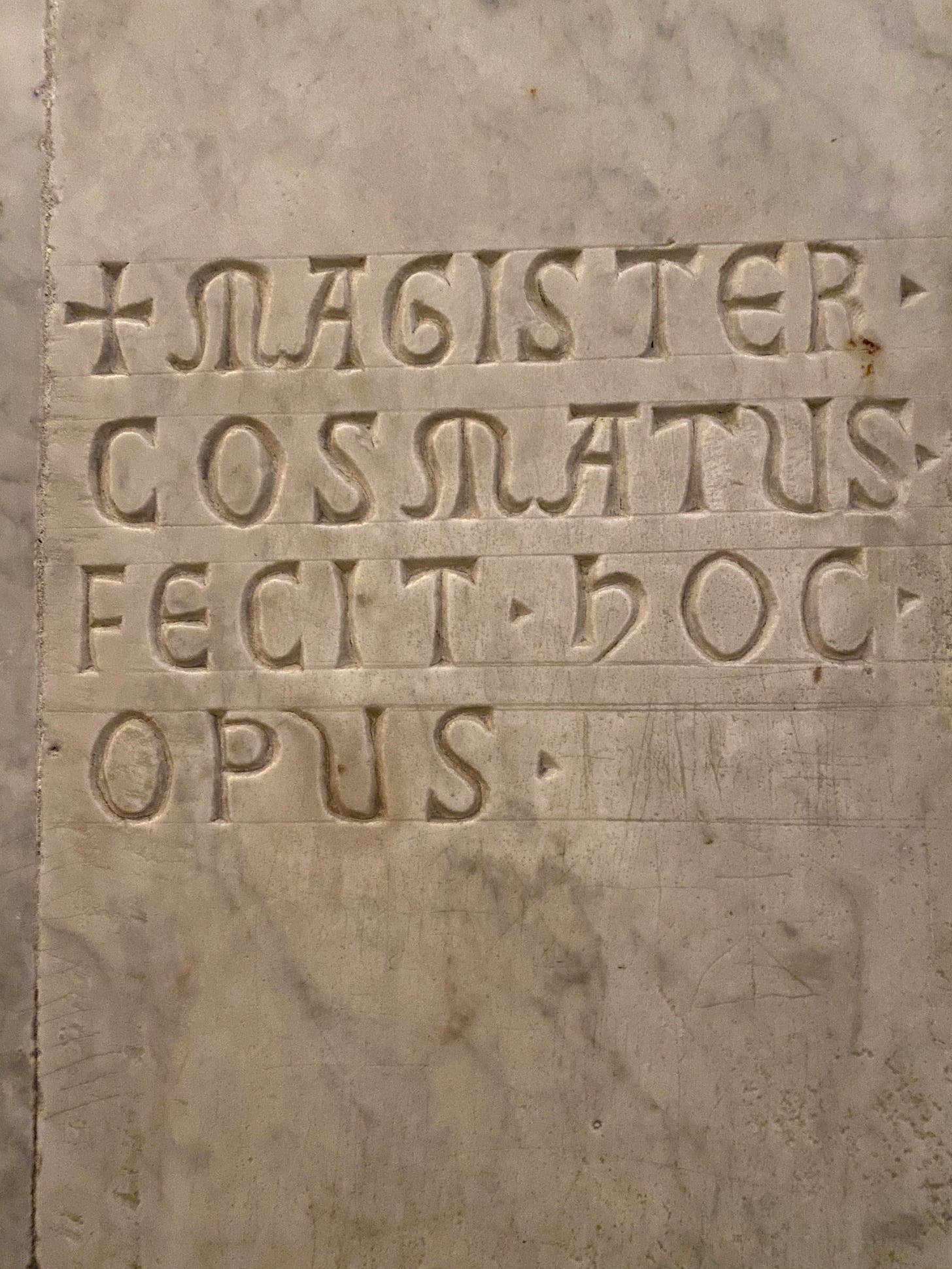
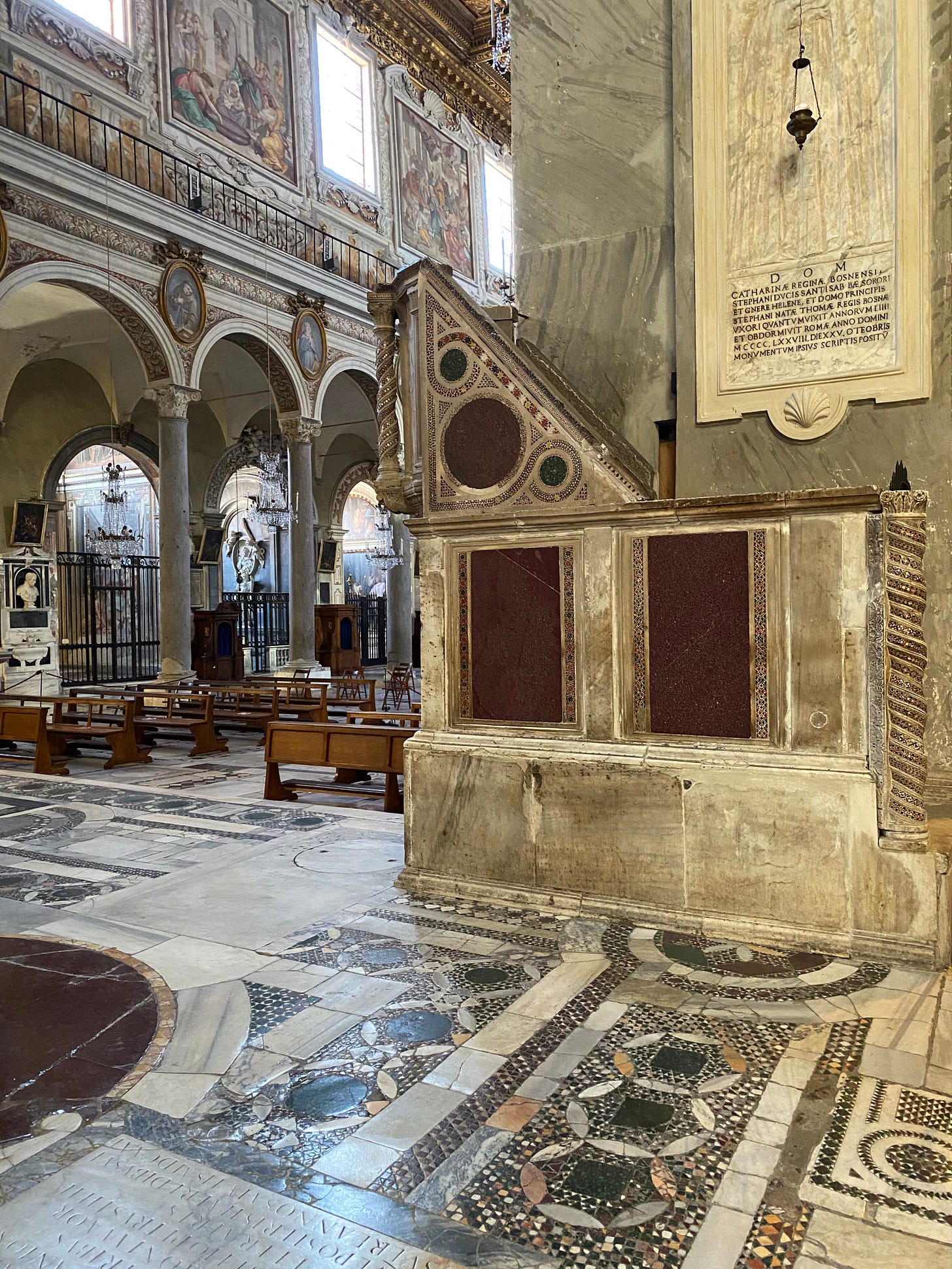
Great link with current events. Will look out for the pavement at the coronation.
As usual fascinating, you write the most interesting articles always so enjoyable. Many thanks, Liz.